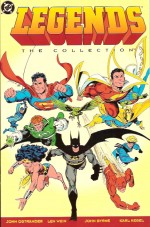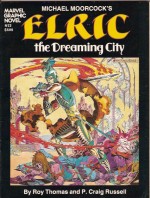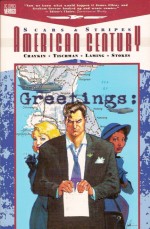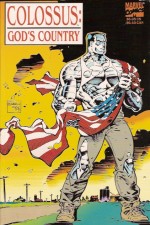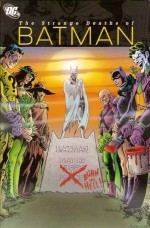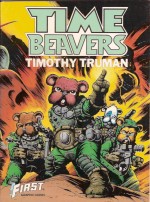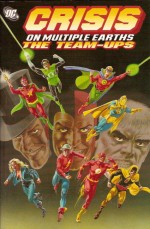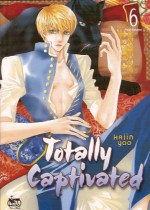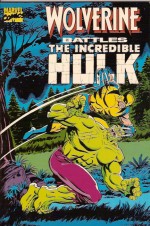
By Goscinny & Tabary, translated by Anthea Bell & Derek Hockridge (Cinebook)
ISBN: 978-905460-61-8
During his lifetime (1926-1977) René Goscinny was one of the most prolific, and is still one of the most read, writers of comic strips the world has ever seen. Among his most popular series are Lucky Luke, Le Petit Nicolas and of course Asterix the Gaul. In 1962, scant years after the Suez crisis, the French returned to the deserts when he teamed with Jean Tabary to produce imbecilic Arabian potentate Haroun el-Poussah but it was the villainous foil, power-hungry vizier Iznogoud that stole the show – possibly the conniving little devil’s only successful scheme.
Les Aventures du Calife Haroun el Poussah was created for Record with the first instalment appearing in the January 15th issue in1962. A modest success, it was transferred to Pilot: a magazine created and edited by Goscinny where it was redeveloped to give more emphasis to the scurrilous little weasel who had increasingly stolen the show.
With the emphasis shifted to the shifty shrimp the revamped series, retitled Iznogoud, commenced in Pilote in 1968, becoming a huge favourite, with 27 albums to date, a long-running TV cartoon show and even a live action movie in 2005. When Goscinny died in 1977 Tabary took over writing the strip as well, moving to book-length complete tales, rather than the compilations of short punchy stories that typified their collaborations.
Like all the best storytelling, Iznogoud works on two levels: as a comedic romp of sneaky baddies coming a cropper for younger readers, and as a pun-filled, witty satire for older, wiser heads, much like its more famous cousin Asterix – and also translated here by the master translators Anthea Bell & Derek Hockridge who made the indomitable little Gaul so very palatable to the English tongue. Here their famed skills conjure up the best – and least salacious – bits of the legendary “Carry On films”…
Iznogoud is Grand Vizier to Haroun Al Plassid, Caliph of Ancient Baghdad, but the sneaky little toad has loftier ambitions, or as he is always shouting “I want to be Caliph instead of the Caliph!”
The vile vizier is “aided” – that’s sarcasm, that is – in his schemes by bumbling and reluctant assistant Wa’at Alahf, and in this second delightful translation from CineBook (which was originally the third album Les vacances du calife (1968, Dargaud), they begin their latest campaign of insurrections with ‘Summer Vacation or Never Say Die.’ As the holidays come round again the vizier persuades the Caliph to forego his usual Summer Palace in favour of a quiet bed-sit by the seaside, where an unwary ruler could easily drown or be buried in the sand or lost at sea or be eaten by sharks or…
As usual the plans go painfully awry and it’s back to Baghdad for ‘Good Sports in the Caliphate’ as a hapless magician/weatherman accidentally creates enough snow in the desert to open a ski resort. It doesn’t take much – it never does – to convince Haroun to sample the chilly thrills of skiing, snowboarding, crevasses and avalanches but as usual it’s not the Big Chief who sustains any crippling injuries.
The vacation theme continues with ‘The Caliph’s Cruise’ but after booking passage for Haroun with the unluckiest sea captain alive, the vile vizier doesn’t get off the ship quickly enough and the selection of cannibals, monsters, savages and sea creatures the voyagers encounter find him a far more suitable subject for their unique attentions, whilst in the concluding tale ‘Lihkwid’s Bottle or the Bottle of Lihkwid’ a travelling merchant provides an infallible elixir that will transform the affable potentate into a louse – but only if Iznogoud can trick him into drinking all three gallons of the foul-tasting stuff…
Snappy, fast-paced slapstick and painfully punny word-play abound in these mirthfully infectious tales, and this series is a household name in France; where the name has even entered common usage as a term for a certain type of politician: over-ambitious, unscrupulous – and often of diminutive stature.
When first released here in the 1970s, Iznogoud made little impression but hopefully this snazzy new incarnation of gloriously readable and wonderfully affordable comedy vignettes can finally find an audience among today’s more internationally aware comics-and-cartoon savvy British Kids Of All Ages.
I’m already one of them: How about you…?
© 1968 Dargaud Editeur Paris by Goscinny & Tabary. All Rights Reserved.

